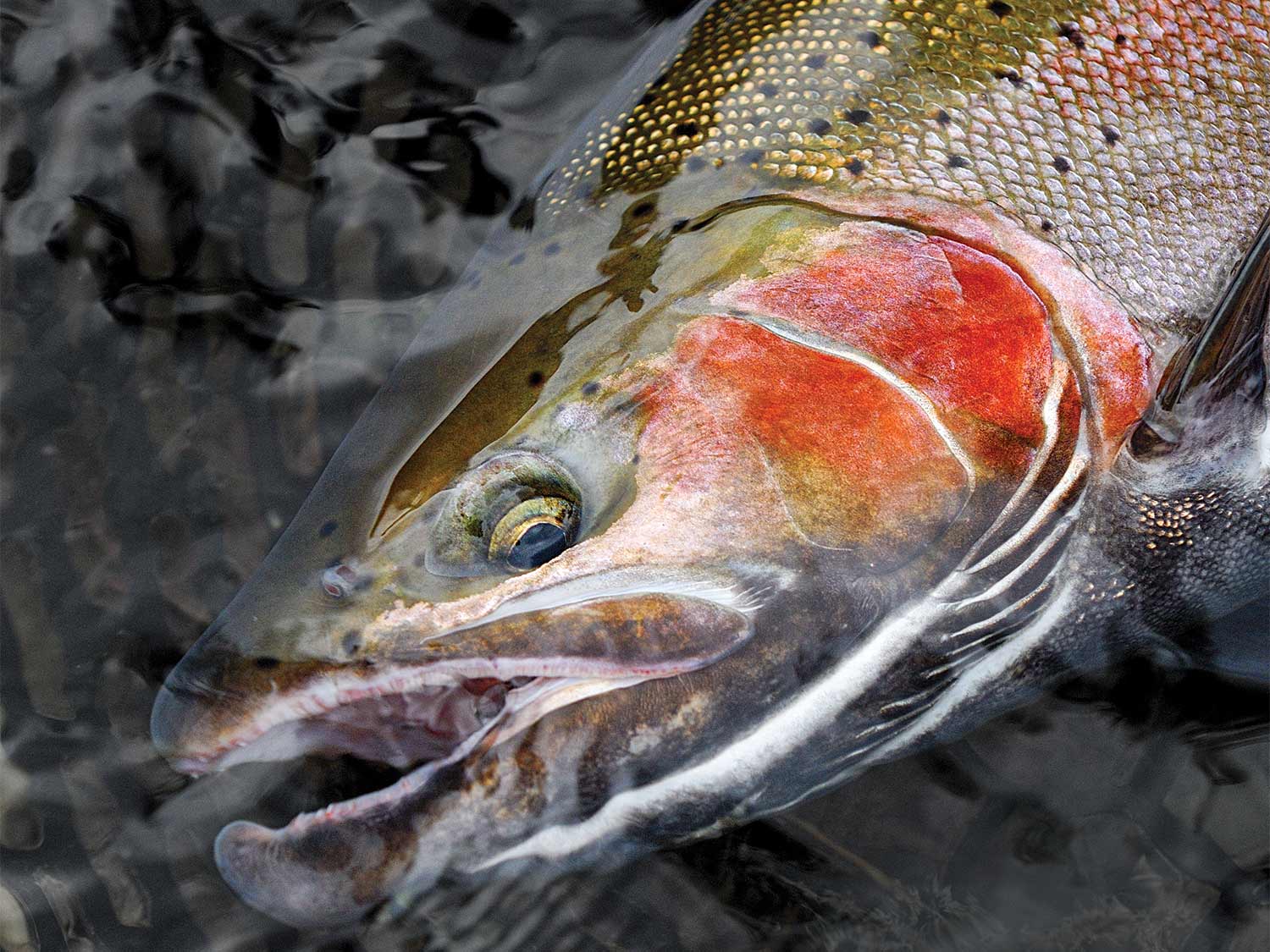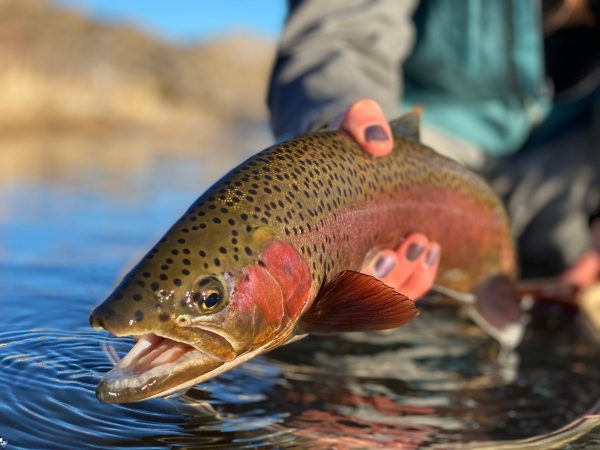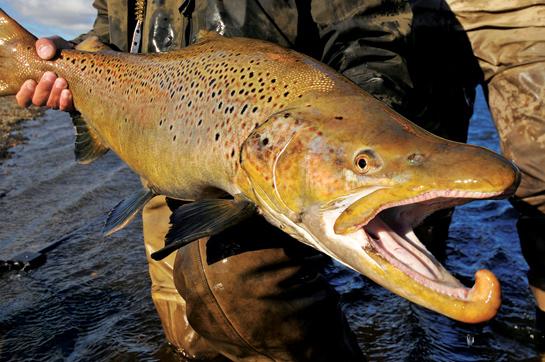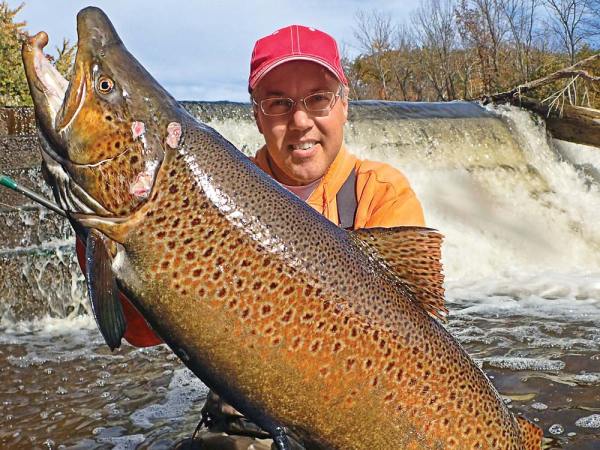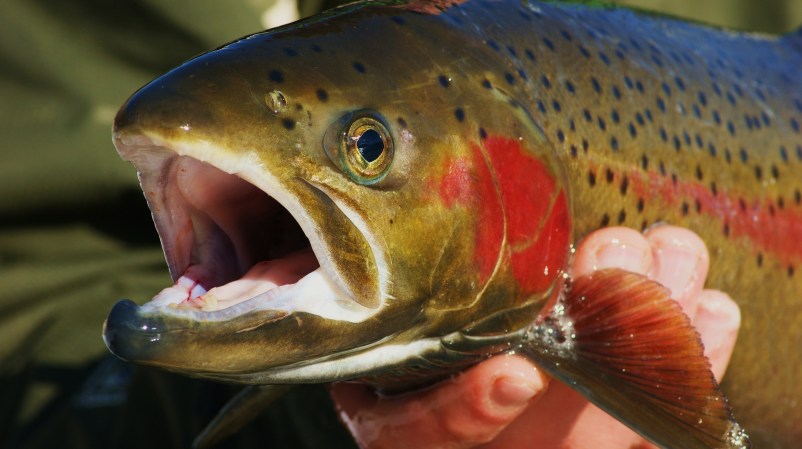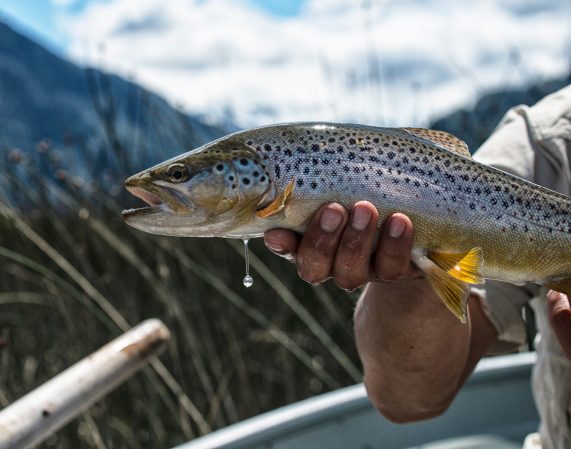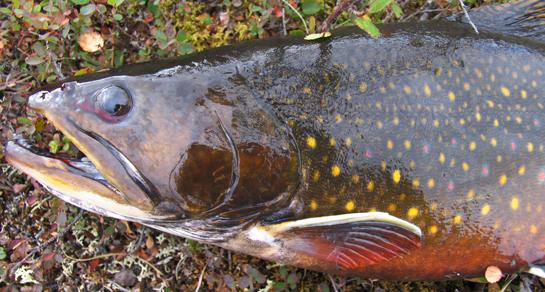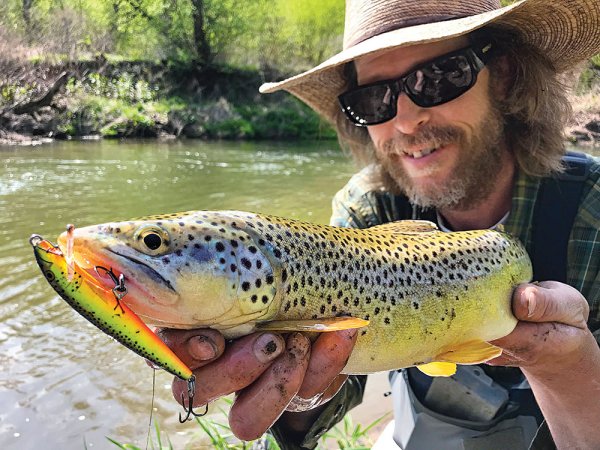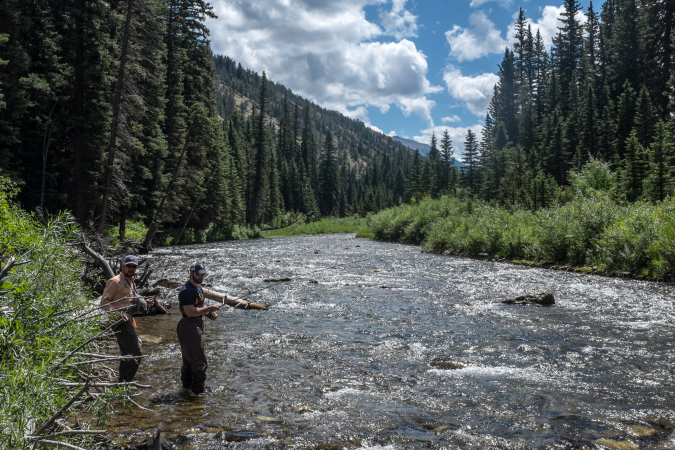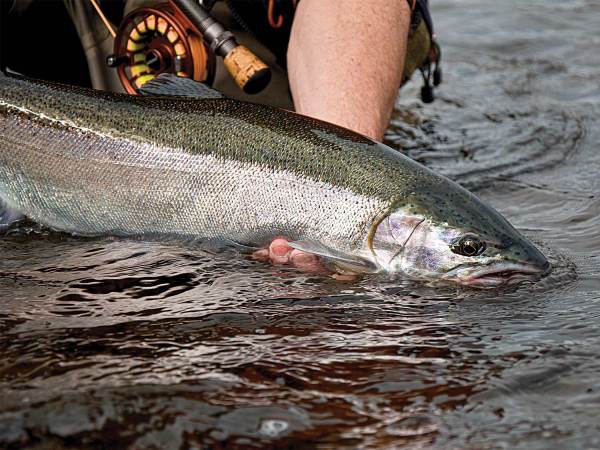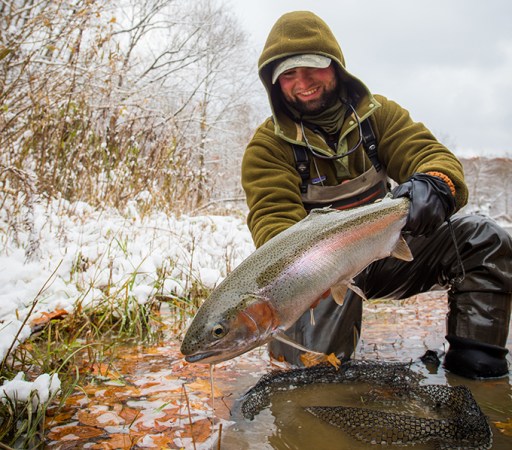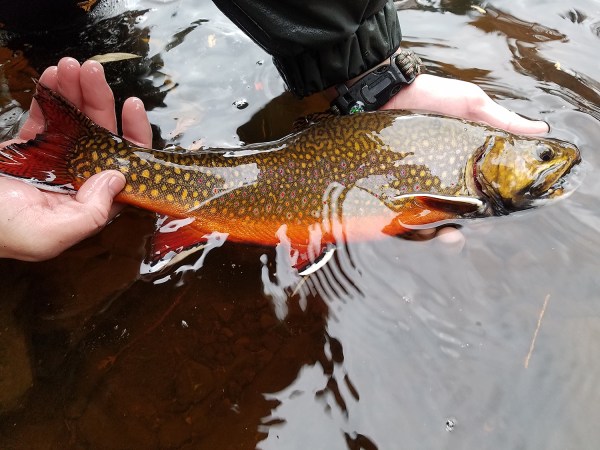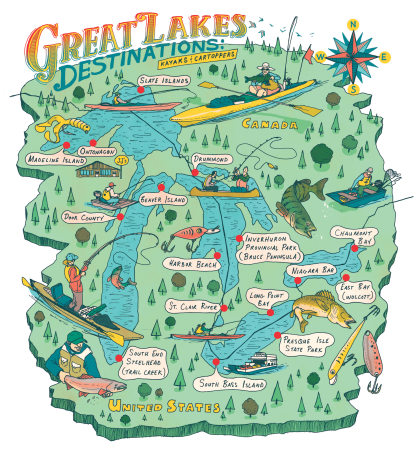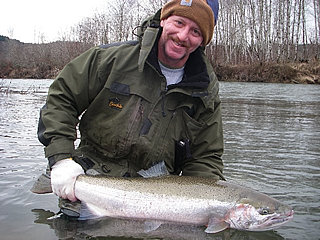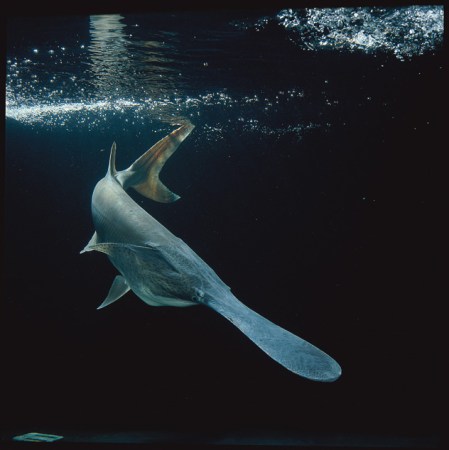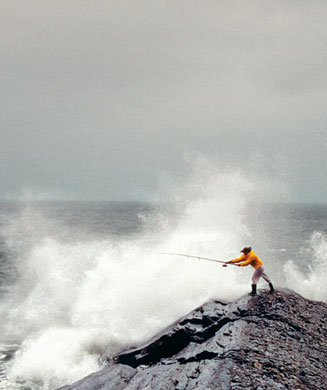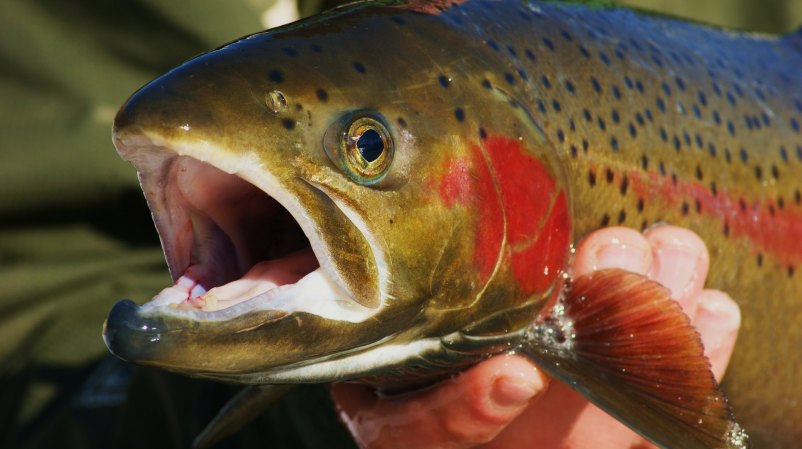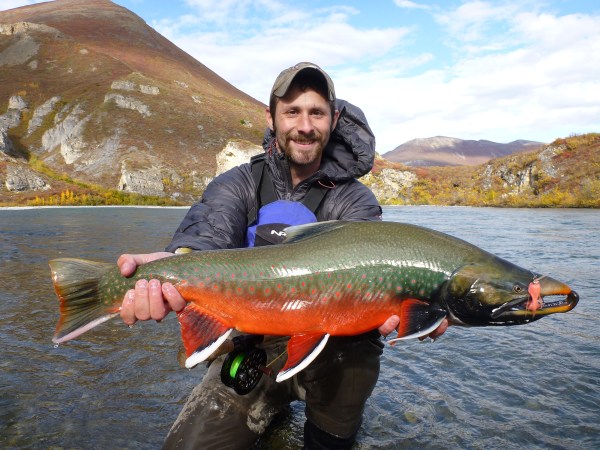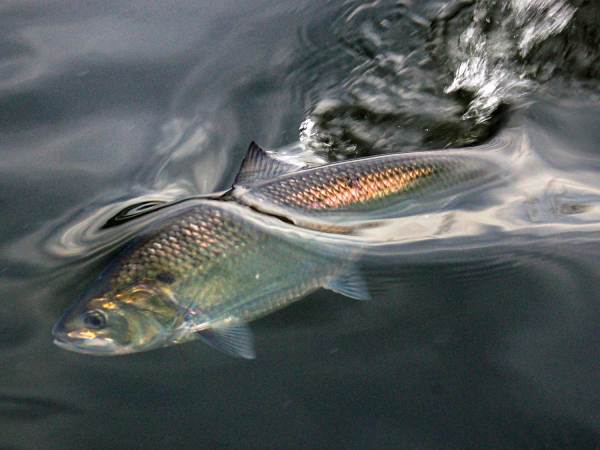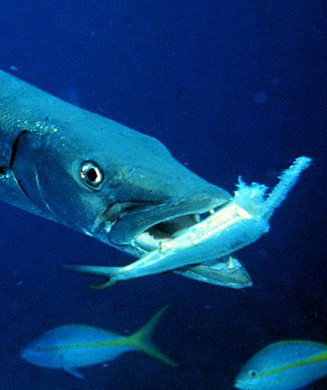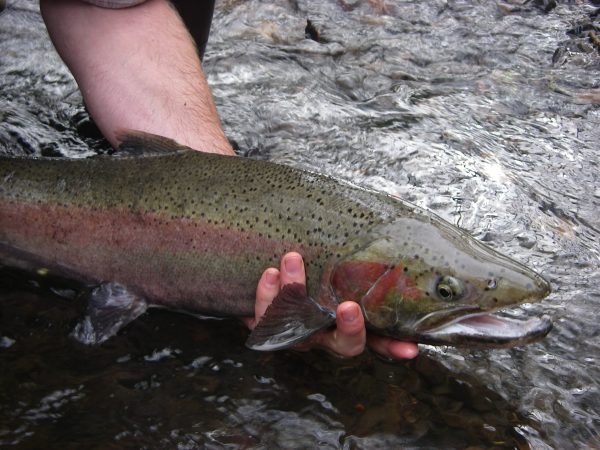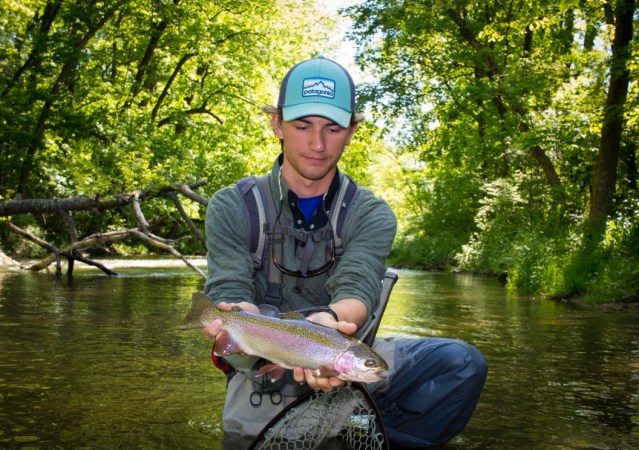Around the time Black Friday shoppers are lining up for “midnight madness” sales, I pull into the empty Seneca travel plaza off I-90 in Victor, New York. Caffeine and tryptophan have been at war in my bloodstream for most of the drive across New York State from my in-laws’ on Long Island, and I need to refill on the former to overcome the latter. Four hours earlier, I’d pushed away from the Thanksgiving dinner table (“No pumpkin pie for me, thanks”) to head for the far western corner of New York. My family was unimpressed but unsurprised, having grown accustomed to my nighttime departures, whether they be midweek hunts for striped bass in June, offshore marathons for tuna in August, or cannonball runs for steelies in the fall and winter months.
This monotonous drive will terminate in Lewiston, New York, a village 30 minutes north of Buffalo, where there are coffee shops, art galleries, and historic hotels, all set along the banks of the Lower Niagara River. Twelve-thousand years ago, Niagara Falls plummeted over the Niagara Escarpment here, but centuries of erosion have moved the 8th Wonder of the World 7 miles upriver. The falls continued retreating 3 to 5 feet closer to Lake Erie each year, until water management over the past century reduced that number to about 1 foot. The hydroelectric plants that divert the water from above the falls and deposit it in the lower river generate one-quarter of the electricity used in New York and Ontario, Canada. Even with some of its power harnessed, Niagara Falls still pulverizes enough limestone, shale, and sandstone to give an aquamarine cast to the Lower Niagara’s waters.
The river takes the 750,000 gallons of water dumped over the falls each second and funnels it through the Niagara Gorge and into Lake Ontario. Currents in the Lower Niagara have been clocked at 25 miles per hour in the Whirlpool Rapids, though they slow somewhat near Devil’s Hole, the upper limit for the Lund-driving local fishermen. I’m not fishing in a Lund, though. I’ll be looking for lake-run brown trout and steelhead in my waders.

Staking Claims
I reach the Lewiston Art Park around 2:30 a.m. The parking lots at this summer concert venue are close to trails and stairs where anglers can access the river. My dashboard thermometer reads 19 degrees. This is the part I’ve been dreading for the past seven hours—changing into my thermal underwear outside. I take a deep breath, fling open the door, and layer up as fast as possible so I can jump back into my truck and blast the heat to kill the chill before getting out again to wader up.
On my first trip to the Niagara, I also arrived in the dark, and, not knowing the river, took what I thought was a trail, only to end up sliding down a steep slope of slick mud and loose rocks on the seat of my waders. When the sun came up, I saw that if I’d walked just 100 feet farther, I would have found the stairs. This time, I take the easy way, and at the bottom of the steps I’m surprised to discover that I’m not the first one here. There’s a fire burning on the shore with a huddled trio of anglers sipping coffee and passing around a flask filled with something stronger. They’re spot-saving.
This practice is a necessary part of the Lake Ontario tributary experience—especially when you consider that the rivers and creeks that host runs of salmon, steelhead, and browns are within driving distance of the most densely populated parts of the country. Claim-jumpers and Johnny-come-latelies hoping to sleep in and still fish prime spots are usually dealt with quickly and loudly.
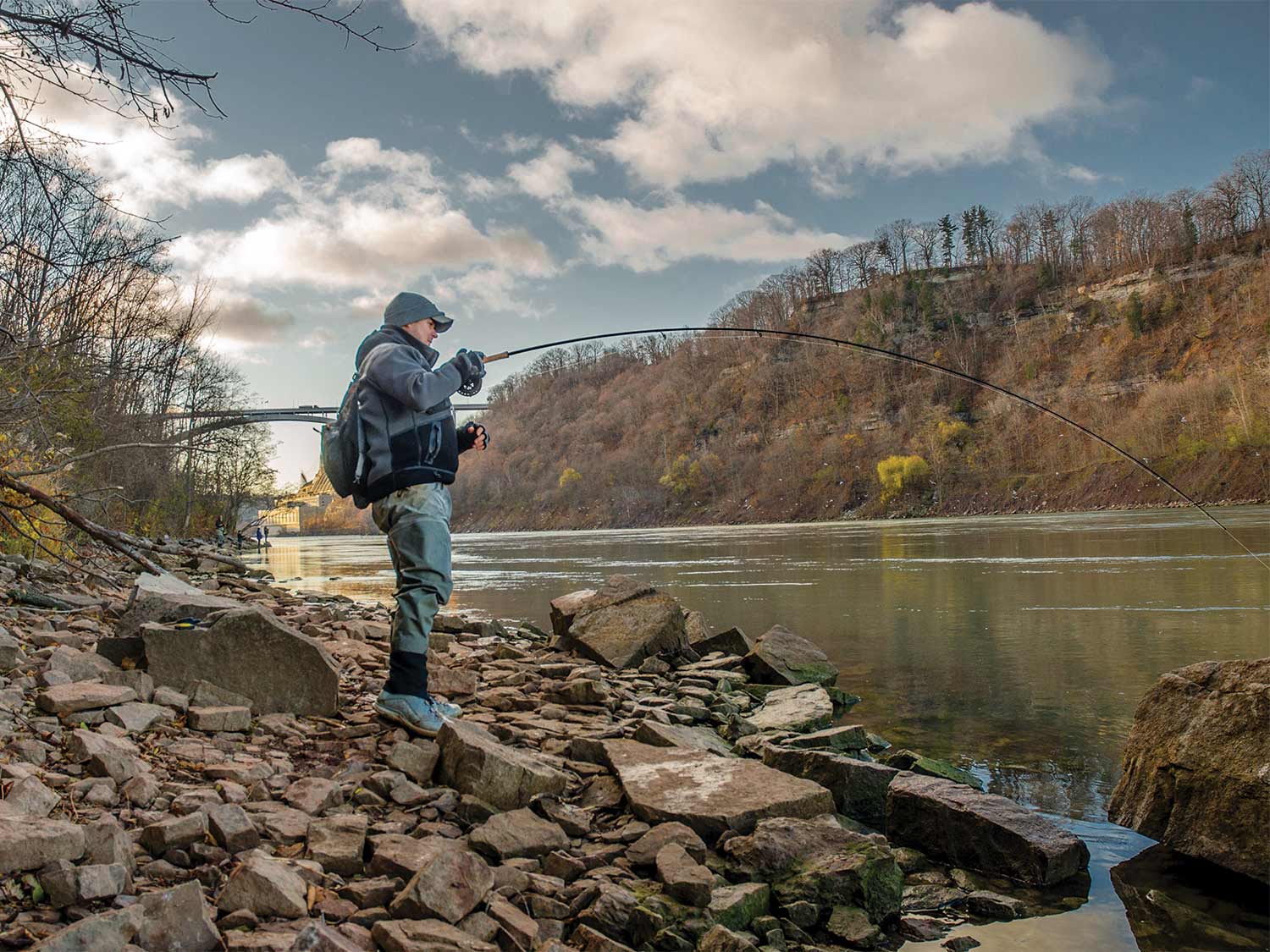
On the Niagara, however, long descents to the water, and even more arduous climbs back up, make it a difficult river to casually fish. This weeds out some of the crowds, but not all of them, especially considering social media has brought more attention to the Niagara in recent years. Glory shots with the Lewiston-Queenston Bridge to Canada in the background tipped off many anglers (myself included) that fishing on the edge of this beast of a river was not only possible, but it was also very productive.
While I’m walking along the bank, a boil close to shore catches my eye. In the beam of my headlamp, I spot several large browns. The fish fade back into deeper water, looking more annoyed by my presence than spooked by it. I stop 100 feet downriver of the other fishermen’s fire, where a sharp current edge created by a point upriver is well within casting range. I piece together the two halves of my centerpin rod and prepare to make my first drift. On many Ontario tributaries, it’s not legal to fish until sunrise, but the Niagara isn’t one of them. I use electrical tape to attach a glow stick to my float, rig up with a glow-in-the-dark bead, and cast into the blackness. Three drifts in, the glowing float disappears.
The fish feels heavy but not fast, which suggests that I’ve hooked a brown trout and not a steelhead. After a brief stalemate 10 feet from shore, I steer it into the shallows where the sight of sweet-potato-colored sides and cranberry-size spots confirm my suspicion. The anglers around the fire take notice, and by the time I release the brown, I see a fleet of glow-stick-fitted floats bobbing in the river.
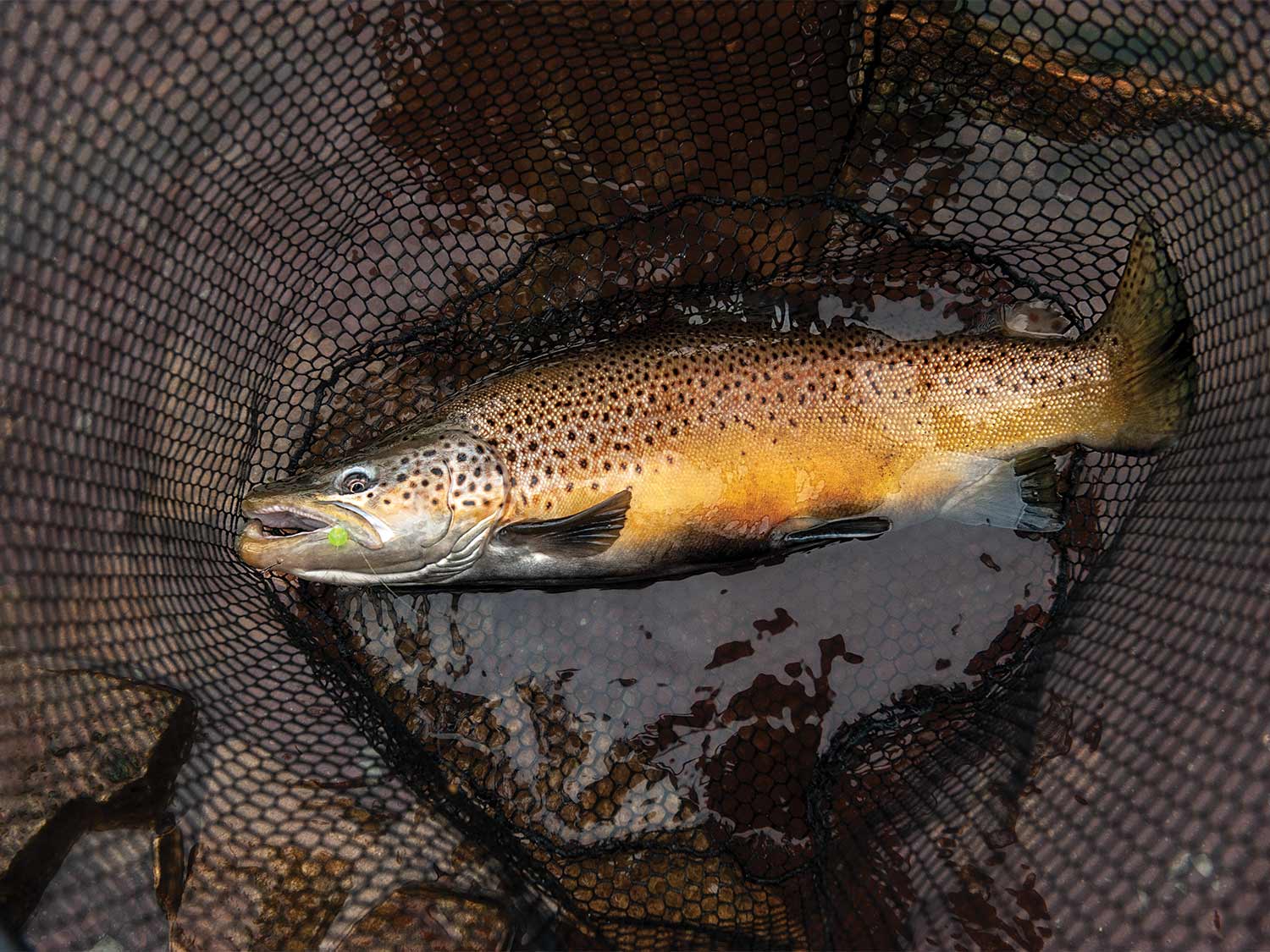
Pins and Needles
I’m a recent convert to centerpin fishing, having joined the fast-growing congregation in 2014. Danny Coleville has been float-fishing with a centerpin for much longer. Coleville—who makes custom centerpin reels and owns Coleville Outfitters, a specialty steelhead and salmon shop—picked up the technique in 1999, when he could count on two hands how many fishermen were using centerpins in the U.S. The technique had emigrated from England (where it was used on light-biting fish such as barbel) to Canada. Canadian anglers eventually brought the gear across the border to United States steelhead waters, where local fishermen were blown away by the effectiveness of the long, limber rods and free-spinning circular reels.
The key to a centerpin’s success is the drag-free drift allowed by the freely spinning spool. On the Niagara, where swirling currents cause difficulties for fly-fishermen and bottom-bouncers, the natural drift created by a centerpin provides a major advantage. But because the gear was expensive and difficult to find, it took years to catch on. According to Coleville, it wasn’t until Raven and Okuma entered the game that the technique took off. “Before those brands, fishermen had to pay $400 to $600 for a specialty reel, and drive to Canada to get it,” he explains. But when Okuma, with its wide distribution, began making centerpin tackle, fishermen could put together a full setup for $300 to $400 at area big-box stores. Once anglers saw how many more fish they could catch with a centerpin, the popularity exploded.
“Fishermen of all ages are taking up float-fishing,” Coleville says, “but it really appeals to the younger crowd.” The appeal, beyond its effectiveness, is that fishing with a centerpin has a grassroots feel—I know of few other fisheries where you can custom-order a reel from the guy who’s going to make it. And centerpin fishing is only becoming more popular as fishermen bring the technique from the Great Lakes tributaries to their home streams and rivers, where smaller reels and lighter rods prove just as effective on “inland” trout.
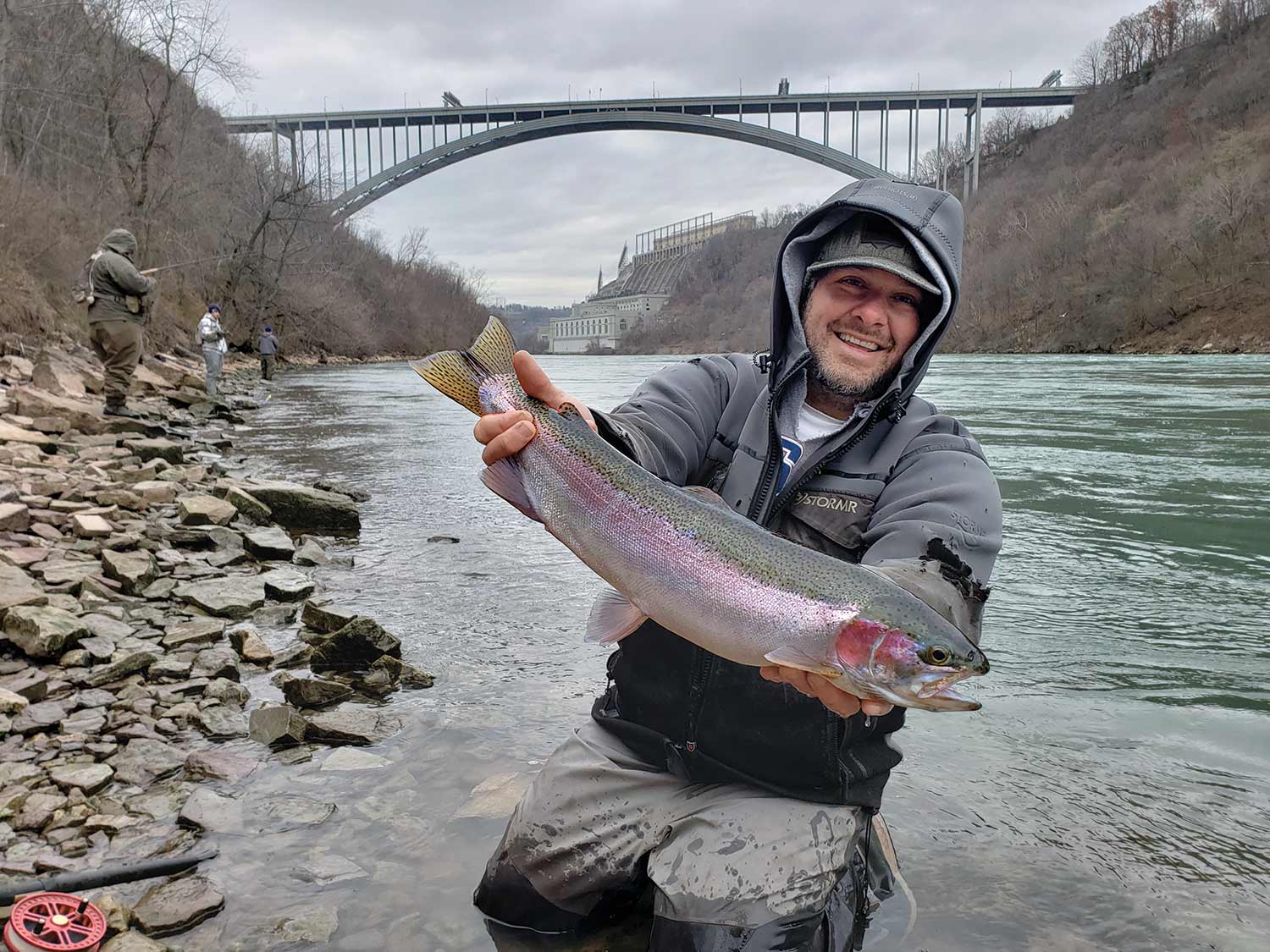
I catch one more brown trout in the dark, but spend most of the pre-dawn getting snagged and rerigging, quickly learning that float-fishing at night requires a strong sense of where the snags are in the river and where the branches are overhead. With the sun comes the crowds, and soon the lonely banks of the Niagara are filled with fishermen enjoying the first day of a three-day weekend. Most use spinning or centerpin outfits, but there are a few fly rods in the mix.
A pair of fly-fishermen arrive just before dawn and set up 100 feet below me. After sunrise, a group of young centerpinners make camp between me and the fly guys. They’re a bit close, but given there aren’t many open stretches of bank left, it doesn’t bother me. The fly guys, however, seem unwilling to brush it off.
When centerpinners were first showing up on U.S. tributaries, they butted heads with fly-fishermen. Coleville says these disagreements had more to do with differences in local etiquette than differences in technique. Because most of the first centerpinners on U.S. rivers were visiting Canadians who were coming from more crowded rivers across the border, they had different ideas of what constituted a “respectful distance,” says Coleville. And because centerpinners could effectively fish a longer stretch of water and caught more fish as a result, they drew the ire of the local fly crowd. While disputes between the two types of anglers have largely stopped, tempers still occasionally flare. After one of the young centerpinners hooks a fish, a fly-fisherman who’d yet to hook up begins throwing rocks at her float as it drifts past. When she tries to defuse the situation, the disgruntled fly-fisherman says something you might hear in a honky-tonk bar at midnight on a Saturday, and her boyfriend steps in. For a moment, it looks like things might get physical. With all the fishermen downriver of me involved in the squabble, I exchange a look with the closest fisherman upriver, and enjoy some extra-long drifts before everyone simmers down and gets back to fishing.
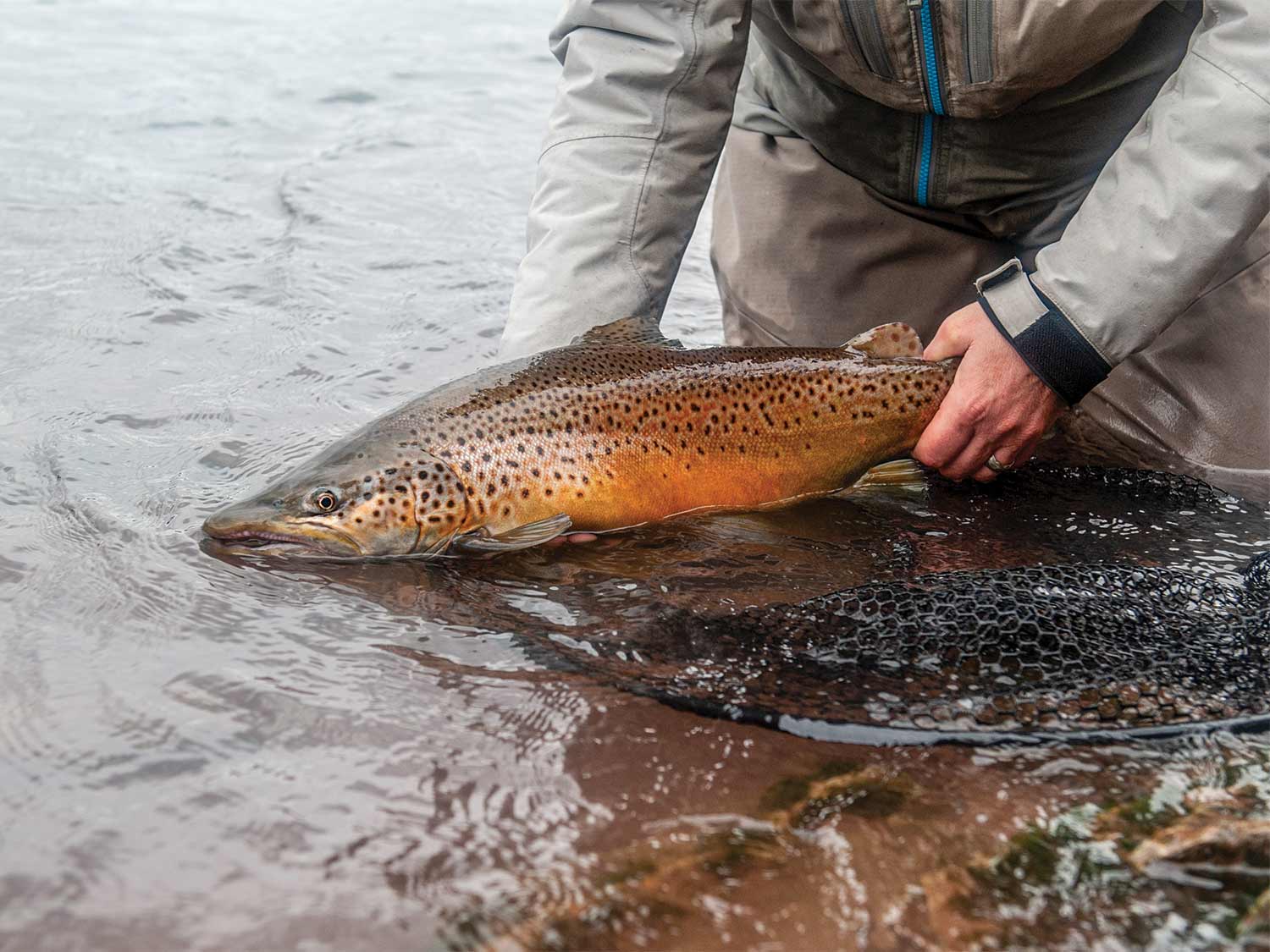
Despite the aerial assaults, the fish continue to bite. I’m doing fine with browns, but by lunchtime, I’ve lost four large, cartwheeling steelhead that barely give me enough time to blink before breaking my leader. Clearly, there are more browns in the river now than steelhead, and the steelies that are here are fresh from the lake and angry.
Around 11 a.m., I move deeper into the gorge where the river narrows and the current increases. As I round a point, the river changes character, with the long, lazy eddy replaced by a violent rapid.
Native Waters
Despite the size, strength, and intimidating appearance of the Niagara, wading in the Art Park section below the power plants is relatively easy. The broken rock and gravel provide sure footing, and there’s no need to wade past your knees. Some locals even fish the river in deck boots. Getting down the gorge to the river is the most dangerous part, especially in the winter, when snow and ice cover the trails. Fishermen tie ropes to trees above popular spots, where they practically rappel down to the water.
Above the power plants, at the ominously named Devil’s Hole, the footing is far more treacherous. Faster-moving water has carved a steep shelf along the shoreline, and a wrong step off a boulder into the deep, swirling current would most likely be your last.
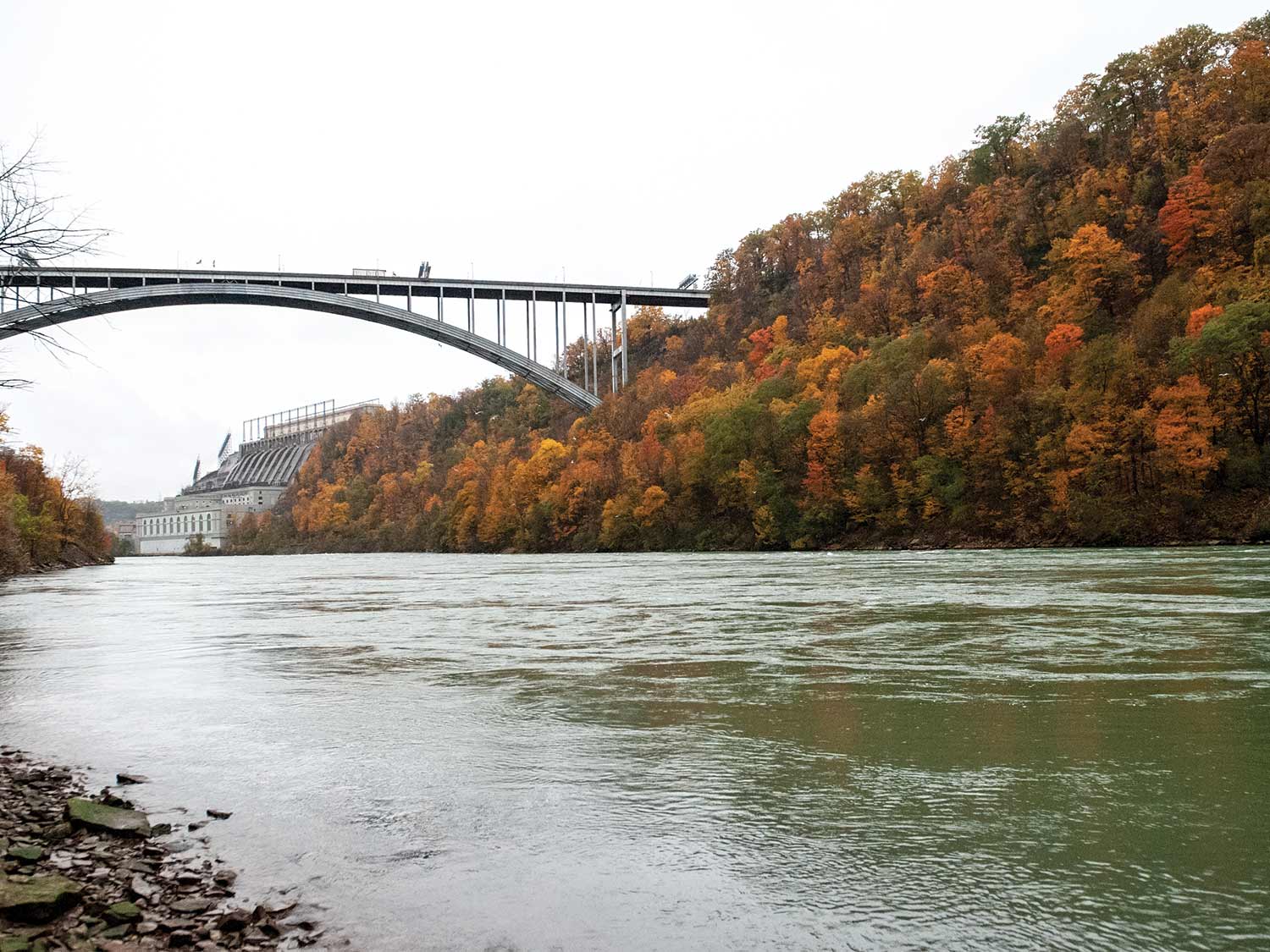
Upriver, I find room in an eddy where a few anglers are spaced out, one of whom is fighting a fish. When I take a place in the lineup, I see he’s hooked a lake trout, not a steelhead. Throughout the eddy, lakers are rolling on the surface.
Because lake trout are native to the Niagara and it’s one of only a few known rivers where lakers spawn, lake trout season is closed, even to targeted catch-and-release fishing, between October and January. But they are much more aggressive than the steelhead and browns, and will strike everything from tiny egg imitations to large jigs, which makes them impossible to avoid.
Read Next: 3 Egg Fly Tricks to Catch More Steelhead
It takes six drifts in the eddy before my float disappears and I’m tied into a lake trout. Most Niagara lakers run between 24 and 32 inches, and while they lack the fire of a hooked steelhead, the fights tend to be drawn-out slugfests, where haymaker head shakes are their preferred strategy.
I hook a half-dozen more before I set into a high-speed bullet train bound for Lake Ontario. I stop the fish before it breaks through the eddy and into the main current, and when I land the steelhead, I see only a faint pink stripe forming on its blindingly silver sides—a clear indication this fish has not been in the river for long.
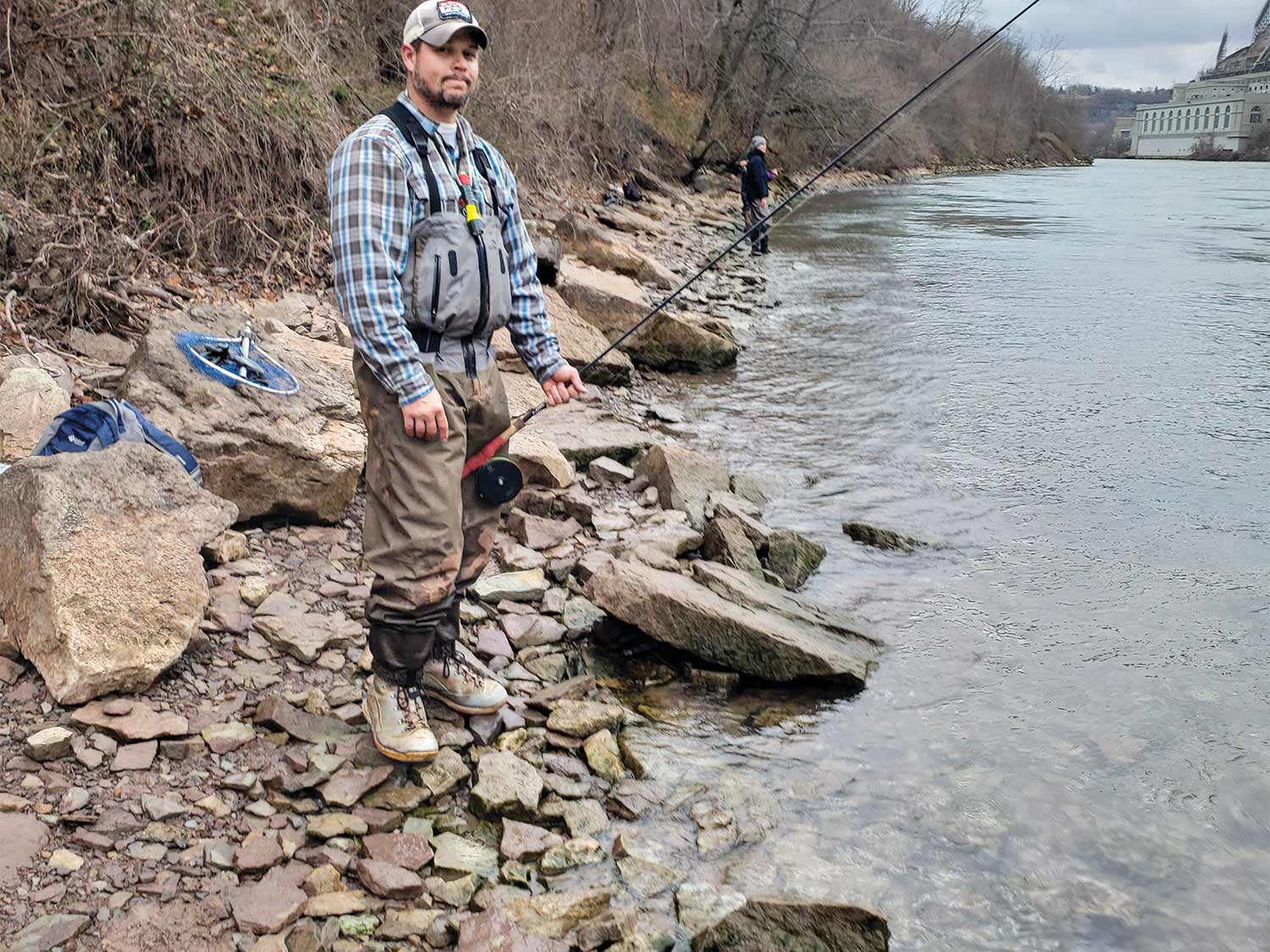
By now it’s been 36 hours since I’ve slept, and I’m feeling run down, but each float drop gives me enough energy to keep casting. The sun’s setting, and I’m taping a fresh glow stick to my float for another round of night-fishing when my friend Joe DiOrio calls to let me know he’s checked into the hotel.
DiOrio is a charter captain out of Connecticut whose specialty is big striped bass. Like me, his local saltwater options had waned by Thanksgiving, and he’s ready to swap stripers and blues for steelhead and browns. Also like me, he’d left his family a couple of hours after Thanksgiving dinner to drive through the night to western New York. That morning, he’d stopped short of the Niagara, fishing Oak Orchard Creek and Burt Dam, before continuing west to Lewiston.
We set a meeting time for dinner, but I’m 30 minutes late because as soon as darkness descends on the gorge, the Niagara’s ravenous browns and lake trout won’t let me leave. DiOrio understands my tardiness perfectly.
Running on Empty
DiOrio and I are the first to the river on Saturday morning. Though the 2 a.m. alarm was tough to answer, seeing the light of my glow stick wink out on my second drift does more to wake me up than a fresh cup of Tim Hortons—the region’s coffee of choice. We have quick success with brown trout and lakers, but are still unsure about whether steelhead feed at night when DiOrio’s float drops at 4 a.m. Following his call of “fish on,” I see a shadowy shape vault out of the water.
“I think it’s a steelhead,” DiOrio says, and a few minutes later, our headlamps are glinting off bright silver sides.
Like most of the talented fishermen I know, DiOrio has mastered the art of having fun while fishing. He takes his fishing seriously, but never so seriously that he loses sight of why he’s there. He easily strikes up conversations with other fishermen and makes new friends through the morning. He’s so friendly and so enjoyable to fish with, you almost forget he’s out-fishing you.
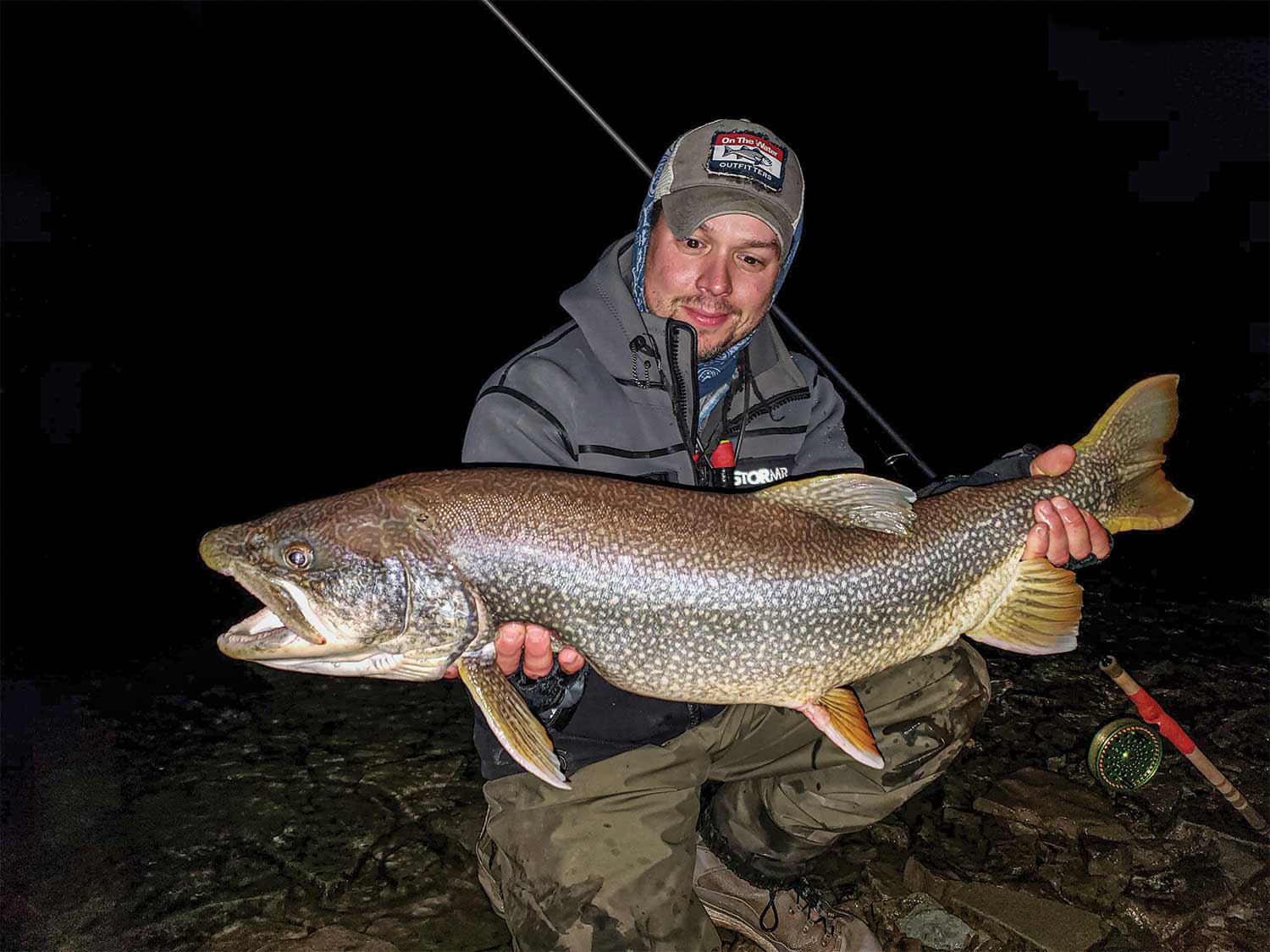
DiOrio has been using a centerpin for more than a decade, having picked it up on the Salmon River in Pulaski, New York, while he was in college. He hones his skill with the centerpin every chance he gets, not only on the Lake Ontario tributaries, but much closer to home on the Farmington River in Connecticut. While my centerpin might see eight days of use in a good year, DiOrio’s hits the water a few dozen times. The difference in experience shows in how quickly he dials in the right depth and feeding lanes of the fish. He plucks several steelhead from between the lakers and browns, and despite copying his float depth, bead color, and drift lanes, I can’t sift out the steel. Still, I’m not complaining. The browns and lakers keep me busy until late morning, when the rising sun sends the fish deep, right into the lane of the conga line of boats working the shoreline.
On Friday, I’d kept pace with the boaters, but on Saturday, the boats run up the score. By 9 a.m., two out of every three boats drifting past have someone fighting a fish, and the third has someone taking pictures of their catch. On the Niagara, the cleaner the water, the better the boat fishing. Strong winds on Lake Erie on Thanksgiving had clouded the water, driving the browns and steelhead close to the banks, giving shore fishermen an edge. By Saturday, the water had cleared enough for the fish to return to the deeper water at the end of our casting range.
After a couple of hours of watching the boats catch, DiOrio and I hike a half-mile upriver to the eddy I’d fished Friday night. There, the out-of-season lake trout are just as thick and aggressive as they’d been the night before, but we struggle to stick steelhead. I get my shot in midafternoon. Just as I wonder how many more casts to make before leaving, I see my float for the last time.
I watch it drift lazily through the eddy when it drops out of sight. I set the hook, and the fish at the other end bucks wildly before bolting for the middle of the river. I put as much pressure as I dare on the 8-pound leader, but the fish breaks into the main current. This is no brown trout. And it’s no laker. It has the fire of a big steelhead, and I want very badly to land it.
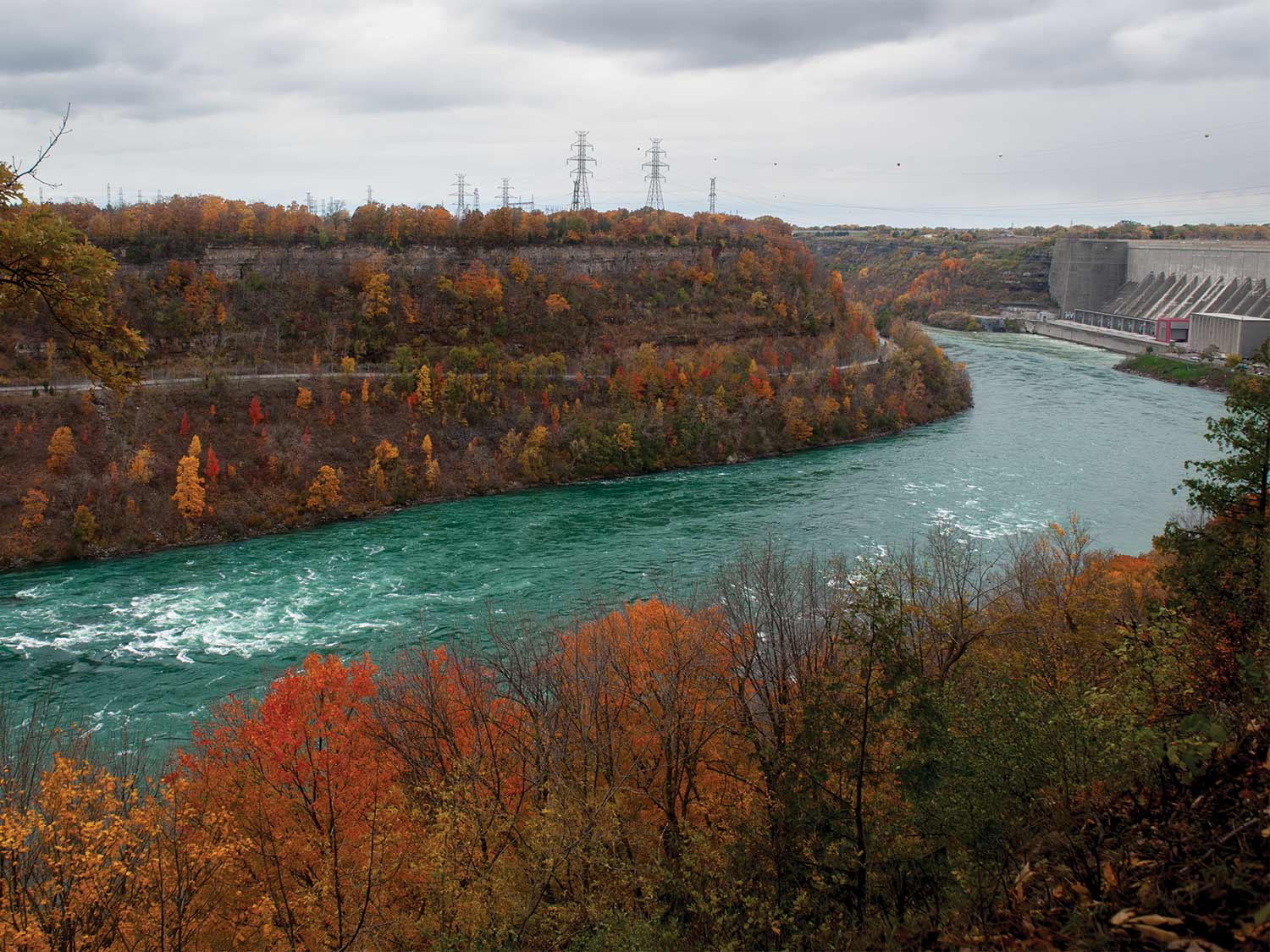
With the full force of Niagara Falls at its back, the fish screams downriver. I’m alarmed at the quickly growing gap between me and what must be the biggest steelhead I’ve ever hooked, so I begin an awkward chase after it along the rocky shoreline. I move as fast as I can, but the steelhead moves faster, and as I round a point, my eyes on my footing, I hear my backing knot click through the guides.
Going into the backing on a fly reel is no big deal. When your backing knot goes through the guides, there is, at most, 100 feet between you and your fish. But with my centerpin, I had more than 100 yards between me and my steelhead. I clamp down on the spool and gain enough to put the monofilament back on the reel. I was adding even more line when I notice I am only feeling dead weight. No more head shakes, no frantic tail beats, just the steady thrum of the river current over a tight fishing line.
The steelhead had wrapped a rock. When the line tightened around the boulder, the fish had broken off, leaving me with 100 yards of line to work back through the snag. I get back most of my line, but it’s too shredded to fish. I return to DiOrio, and he shows sympathy in the way that a good fishing buddy does—by laughing and taking my picture.
I arrive home on Cape Cod around 3 a.m., 55 hours after passing on dessert at Thanksgiving. I’ve spent 14 hours driving, six hours sleeping, three hours eating, and 32 hours fishing. I climb right into bed—but I’m wired. DiOrio is still in Lewiston, and I’m wondering about the bite. I text DiOrio to see if he’s up and on the river. He is. Lucky bastard, I think before finally shutting my eyes.
